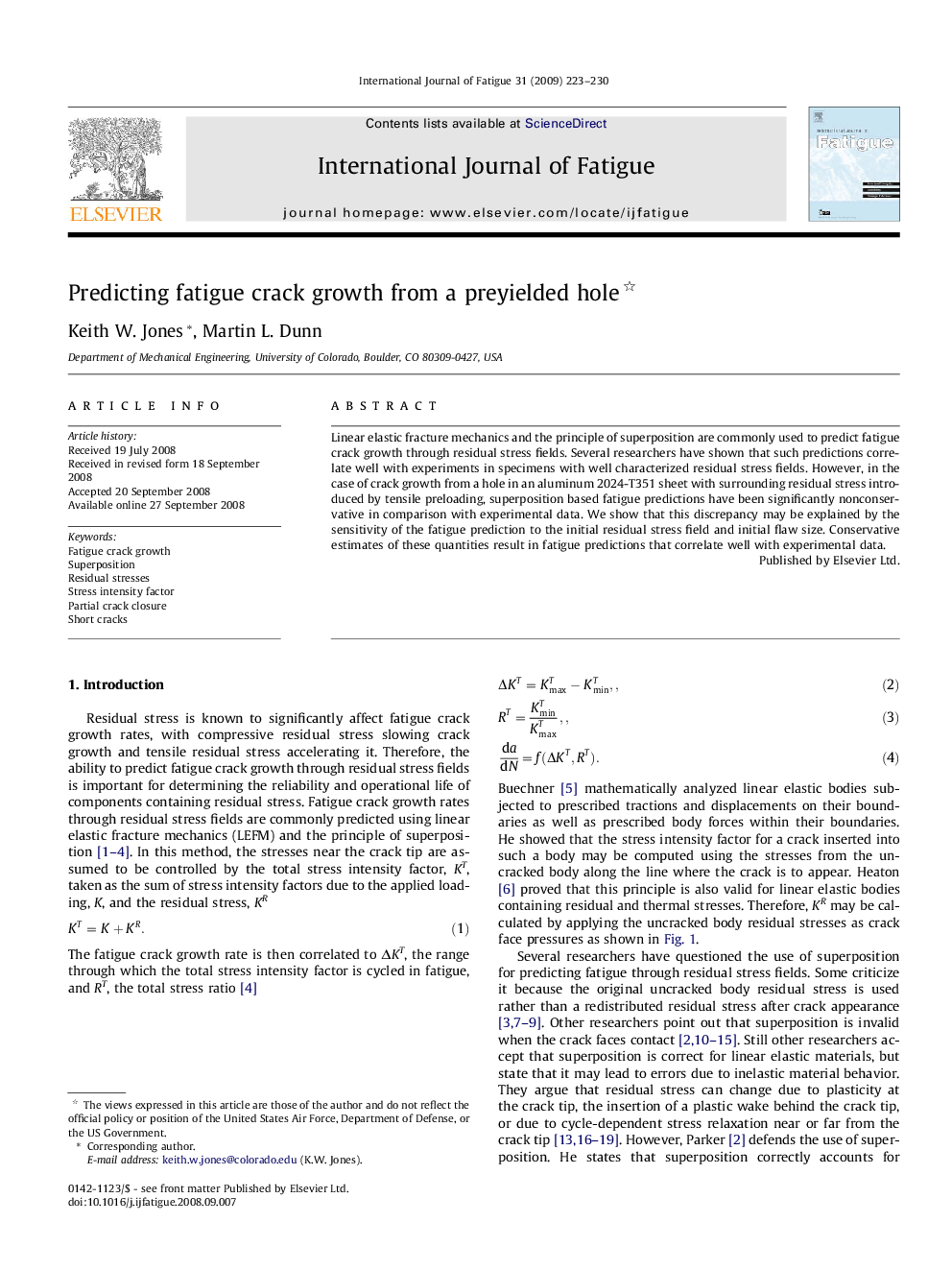| Article ID | Journal | Published Year | Pages | File Type |
|---|---|---|---|---|
| 777852 | International Journal of Fatigue | 2009 | 8 Pages |
Linear elastic fracture mechanics and the principle of superposition are commonly used to predict fatigue crack growth through residual stress fields. Several researchers have shown that such predictions correlate well with experiments in specimens with well characterized residual stress fields. However, in the case of crack growth from a hole in an aluminum 2024-T351 sheet with surrounding residual stress introduced by tensile preloading, superposition based fatigue predictions have been significantly nonconservative in comparison with experimental data. We show that this discrepancy may be explained by the sensitivity of the fatigue prediction to the initial residual stress field and initial flaw size. Conservative estimates of these quantities result in fatigue predictions that correlate well with experimental data.
